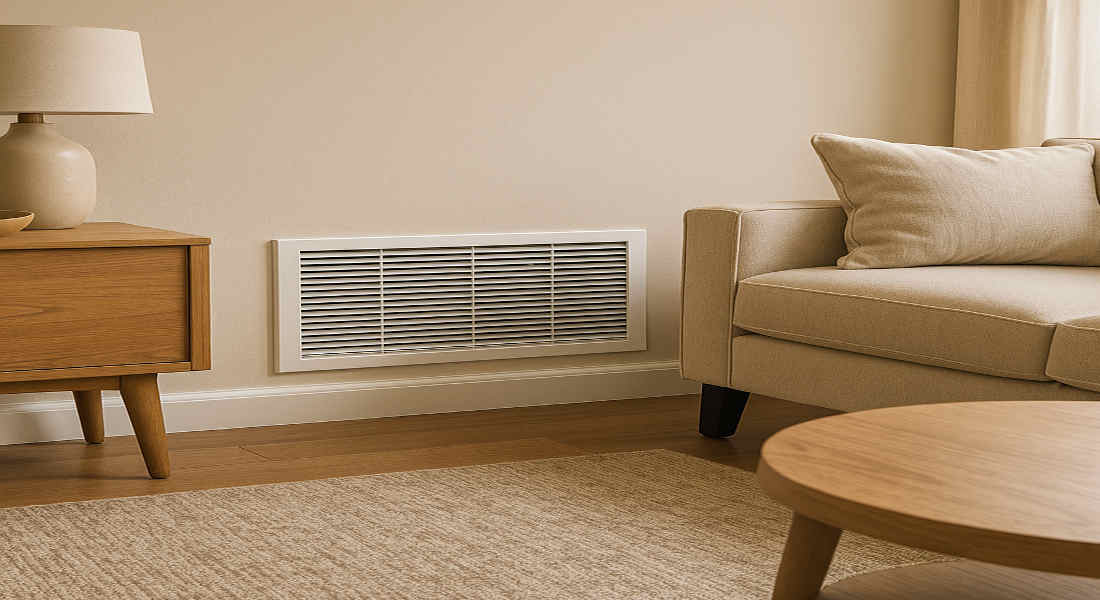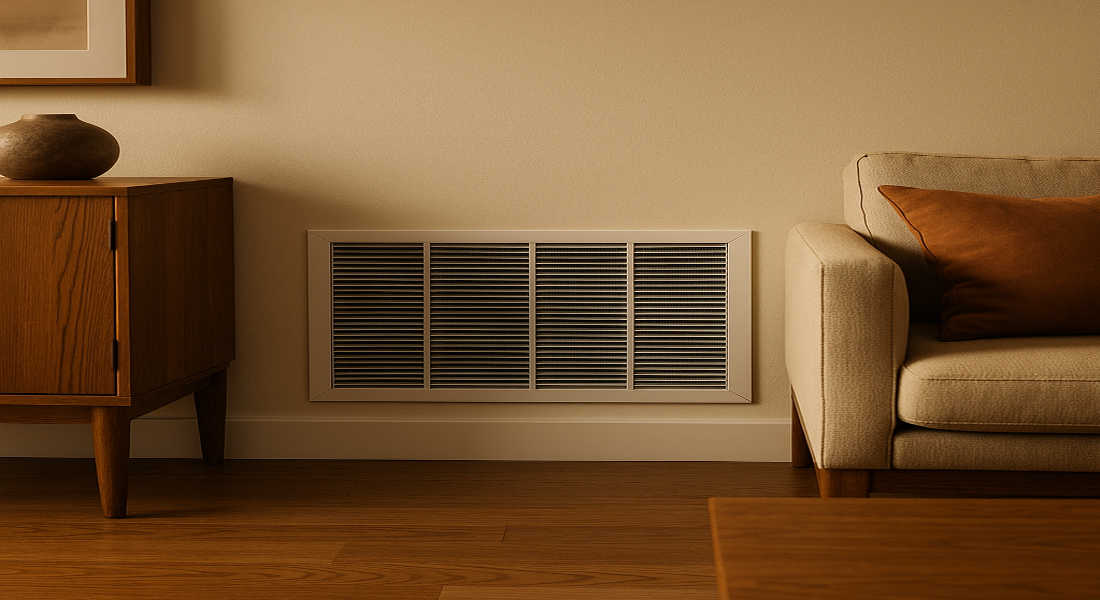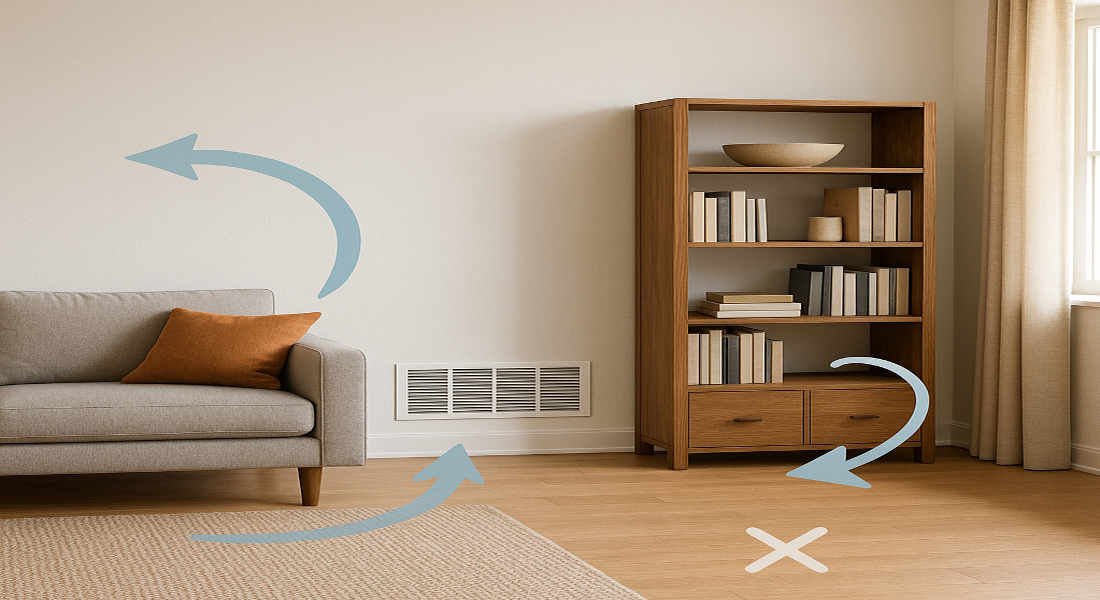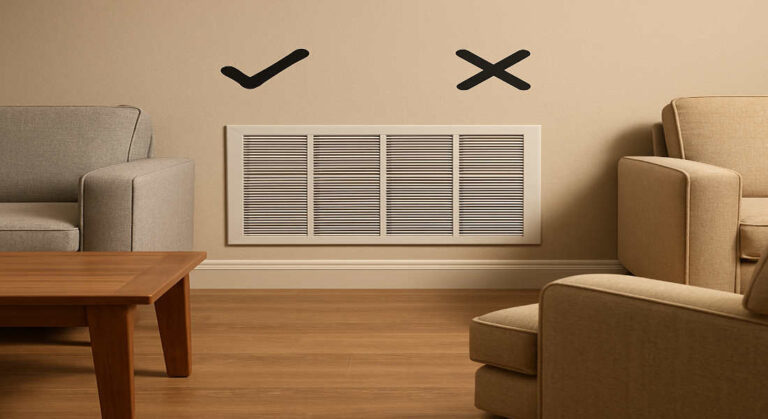Home design and furniture placement extend beyond aesthetics—it’s also about ensuring your living space remains both functional and comfortable. One common question that homeowners often ask is: “Can you put furniture in the home in front of the return vent?”
While it may seem harmless to place a chair or sofa near a vent, this decision has a profound impact on your heating, ventilation, and air conditioning (HVAC) system, energy efficiency, and even your safety.
Understanding Home Air Vents and Their Function
What Is a Return Air Vent?
At the heart of every HVAC system are air vents, which play different roles in regulating your home’s temperature and air quality. A return air vent is a crucial component. It’s responsible for pulling air from your living space back into the HVAC system to be cooled or heated before being recirculated. Think of it as the system’s “inhale” mechanism.
Without return vents, your HVAC system wouldn’t be able to balance airflow or maintain consistent temperatures throughout your home.
Return Vents vs. Supply Vents
To fully understand return vents, it’s helpful to know how they differ from supply vents:
- Return Vents: Pull air back into the HVAC system. They are usually larger and don’t have adjustable louvers.
- Supply Vents: Push conditioned air out into your home. These are smaller and typically have adjustable flaps to control airflow direction.
Where Are Return Vents Usually Located?
The placement of return vents depends on the design and ductwork of your home. Common locations include:
- Walls: Often seen in central rooms or hallways.
- Floors: Common in older homes with traditional HVAC setups.
- Ceilings: Typically found in homes with modern or multi-story HVAC designs.
Why Are Return Vents Crucial for HVAC Efficiency?
Return vents ensure that your HVAC system operates efficiently by maintaining proper airflow. When air returns to the system unobstructed, it reduces strain on the equipment, providing smoother operation and a longer lifespan.
The Impact of Furniture Placement on Return Vents
How Furniture Can Block Airflow
Placing furniture directly in front of a return vent can severely obstruct airflow. When a vent is blocked, the HVAC system must work harder to pull in air, leading to:
You may also read (diy guide repairing peeling paint on home furniture).
- Increased strain on the system
- Reduced airflow in other parts of the house
- Higher energy consumption and utility bills
For example, a heavy sofa positioned inches away from a return vent can impede the system’s ability to circulate air effectively, creating temperature imbalances in your home.
What Happens When Return Vents Are Blocked?
Blocking return vents has several negative consequences:
- Reduced HVAC Efficiency: Obstructed vents force your system to work harder, lowering its overall efficiency.
- Higher Energy Costs: A struggling HVAC system consumes more energy, which directly impacts your wallet.
- Potential System Damage: Prolonged strain can lead to breakdowns, requiring costly repairs or even system replacement.
Health and Safety Concerns
Blocked return vents don’t just affect your HVAC system—they can also impact your health and safety:
- Poor Air Quality: Reduced airflow means less circulation of clean, filtered air, allowing allergens, dust, and pollutants to accumulate.
- Fire Hazards: Placing heavy furniture or flammable materials near vents can create a fire risk, especially if the system overheats.
By understanding these risks, you can see why proper furniture placement is essential for both comfort and safety.
Can You Put Furniture in Front of a Return Vent?
The short answer: It’s not recommended. However, there’s more to this question than a simple yes or no.
General Recommendation
Avoid placing large or bulky furniture directly in front of return vents. This includes items like sofas, beds, and cabinets, which can completely block airflow.
Minimum Clearance Needed
To maintain airflow, it’s best to leave at least 6 to 12 inches of space between furniture and the return vent. This minor adjustment can make a big difference in how efficiently your HVAC system operates.
Exceptions and Alternatives
If space is limited and you must place furniture near a vent, consider these alternatives:
- Open-Backed or Backless Furniture: These allow air to circulate more freely, minimizing obstruction.
- Vent Covers or Grilles: Decorative covers designed to maintain airflow can be a stylish and functional solution.
- Avoid Fabric Drape: Avoid using curtains, blankets, or other soft materials that can easily be sucked into the vent opening.
You may also read (how to understand the concept of a half house).
Practical Tips for Furniture Placement Near Return Vents
- Plan your room layout with HVAC efficiency in mind.
- If you’re unsure, use a vent deflector to redirect airflow away from furniture.
- Test airflow by holding a piece of tissue near the vent—it should stay in place and not flutter erratically.
Safe Furniture Placement Near Other Types of Vents
Supply Vents and Floor Vents
While return vents pull air in, supply vents push conditioned air out. Blocking these vents can also lead to problems similar to those caused by obstructed return vents, such as uneven temperatures and increased energy costs.
Furniture Placement Tips for Floor Vents
- Avoid placing heavy furniture directly over floor vents, as this can lead to overheating or damage to your flooring.
- Use Vent Deflectors: These inexpensive tools help redirect airflow from under furniture into the room.
- Elevate Furniture: If blocking a floor vent is unavoidable, use furniture risers to create clearance.
Balancing Aesthetics and Function
You don’t have to sacrifice style for functionality. Look for ways to integrate vent-friendly furniture arrangements into your overall design. For example, use lightweight decorative pieces near vents instead of bulky furniture.
Maintenance Tips to Keep Vents and HVAC System Efficient
Proper furniture placement is just one part of the equation. Regular maintenance is equally important to ensure your HVAC system runs smoothly.
Clean the Return Vent Grilles Regularly
Dust and debris can accumulate on vent covers, restricting airflow even if they aren’t blocked by furniture. Wipe them down every month or so.
Check for Obstructions
Make it a habit to inspect vents for any accidental blockages, such as toys, rugs, or fallen objects.
Schedule Professional Maintenance
An annual HVAC inspection can help identify potential issues and keep your system in top shape.
4. Benefits of Keeping Vents Unobstructed
- Improved Air Quality: Clean, unobstructed vents ensure better circulation of filtered air.
- Lower Energy Costs: Reduced strain on your system translates to lower utility bills.
- Extended HVAC Lifespan: Proper airflow prevents unnecessary wear and tear, extending the lifespan of your HVAC system.
You may also read (does steaming home furniture really clean it).

